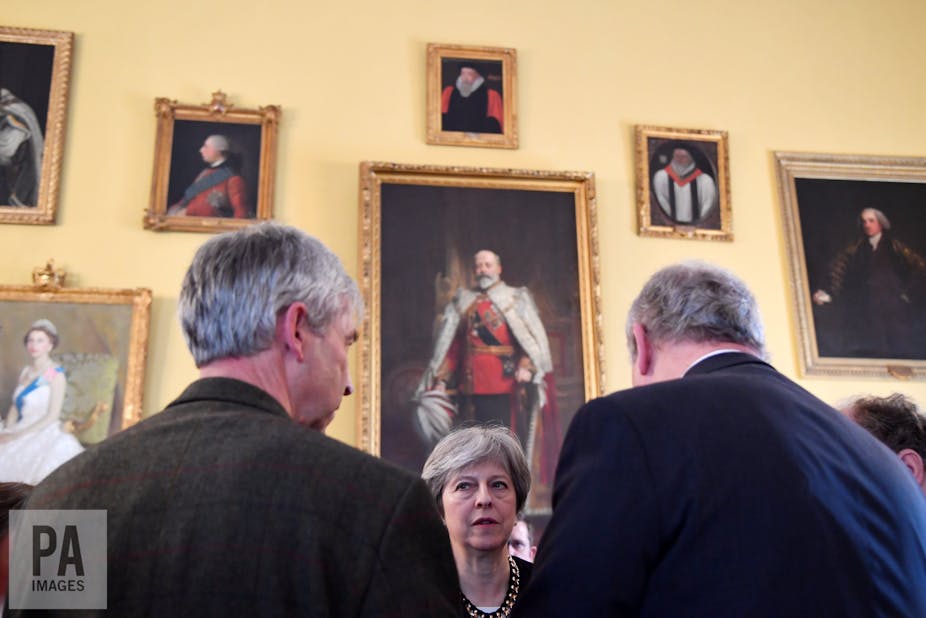As the allegations relating to the attack on Sergei Skripal and his daughter Yulia in Salibsbury, England, develop, credible evidence to prove Russian involvement is eagerly sought. However, definitively proving Russian involvement is fraught with risk.
The declaration by UK prime minister, Theresa May, that it was “highly likely” that Russia was either directly or indirectly responsible for the attack has generated international support – but it’s unlikely to be enough to justify multilateral sanctions against Russia.
Now that 23 Russian diplomats – referred to as “undeclared intelligence officers” – are being expelled from the UK, the onus is now on the British government to prove Russian involvement. Russian state assets in the UK have been frozen and the British royal family is to boycott the impending World Cup in Moscow. Top level bilateral contacts between the UK and Russia have been suspended.
Britain has faced this dilemma before. The assassination of Alexander Litvinenko in November 2006 is the most famous case. The official report into the assassination of Litvinenko proffered a mass of evidence. There were radiation reports, forensic evidence, phone reports, CCTV footage and the testimony of 62 witnesses. The investigation also had access to a “considerable quantity” of intelligence material.
A case from history
In previous confrontations, particularly during the 1920s, one way to prove Soviet involvement was to expose intelligence information. During the 1920s, the most credible source of evidence was signals intelligence. The British government chose to release details of Soviet communications that exposed the activities of operatives.
This is generally seen as an inherently bad policy move. Revealing sources of intelligence provides an opportunity for the target nation or group to identify potential informers and double agents. Or, as in the case with British intelligence on the Soviet Union in the 1920s, it involves revealing that the method to encrypt communications had been broken.
At that time, it was deemed necessary to reveal Soviet attempts to subvert the security of the UK to gain public support for the expulsion of Soviet diplomats, despite the risks involved.
Investigations into Soviet subversion during the 1920s increased significantly following the 1926 general strike. A joint operation between MI6 and the Metropolitan Police Special Branch revealed that the Soviet Union had transmitted funds in order to support those striking. It had been seeking to encourage a climate conducive to a British revolution.
This intelligence led to all of the components within Britain’s intelligence and security apparatus increasing their efforts to uncover Soviet-sponsored subversion. An opportunity for action arose when a former employee of the All Russian Co-operative Society (ARCOS), the group responsible for trade with Britain, provided information that a signals training manual had been copied by ARCOS staff. This manual provided instructions for wireless telegraphy, including assembly and maintenance. Because the document was marked for “official use only” possession by anyone other than those authorised, amounted to a contravention of the Official Secrets Act.
The police raided ARCOS premises in May 1927 but failed to find the manual. The warrant was obtained under the presumption that a copy of the manual would be discovered. Thus, the British government had to justify its rationale for conducting the raid. In support of this decision, the government released decrypted communications intelligence that proved Soviet involvement in sponsoring subversion in Britain.
Although the release of signals intelligence justified the raid, it undermined future operations. Following the revelation, the Soviet Union altered its method for encryption – adopting the “one-time pad” – and prevented British intelligence from gaining similar insight until the Cold War.
A major gamble
Christopher Andrew, author of the Authorised History of MI5, referred to this act as “an orgy of government indiscretion about secret intelligence for which there is no parallel in modern parliamentary history”. In order to prove Soviet subversion in one incident, a substantial risk had to be taken.
This, of course, isn’t a particularly wise course of action. In a confrontation in which tensions are rapidly increasing, the British government will have to be very delicate about balancing the need for disclosure with the need to maintain the security of intelligence processes. It is unlikely that British intelligence will have access to a singular source – like that disclosed following the ARCOS raid – that would prove the direct involvement by the Russian state.
Any official investigation will have to be careful to protect sources, such as GCHQ’s access to Russian communications, or human sources controlled by MI6. As was the case during the investigation into Litvinenko, it may be necessary to grant an official enquiry similar access to secret intelligence in closed session.
This lesson shows how high the stakes are in cases of this kind. The pressure is mounting to prove Russian involvement in the Skripal case, but this kind of revelation often comes at a price. It might help in the short term but can damage the effectiveness of future British intelligence operations in the long term.

